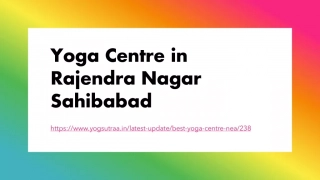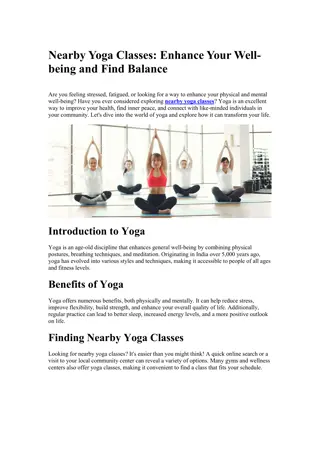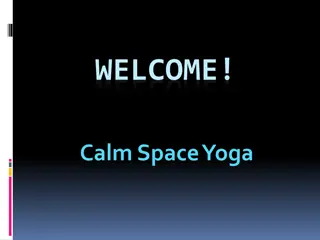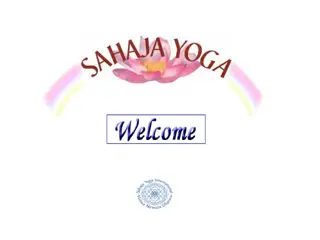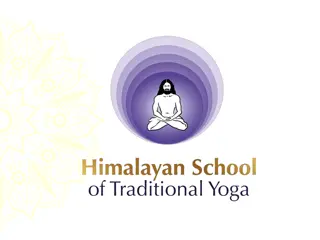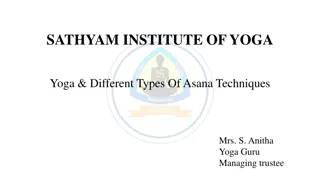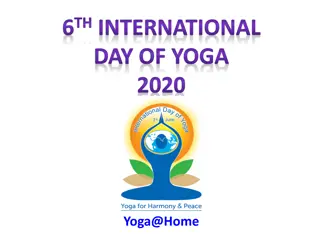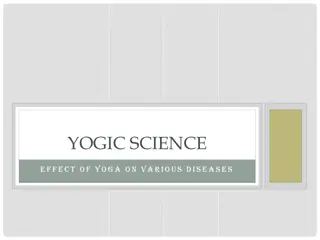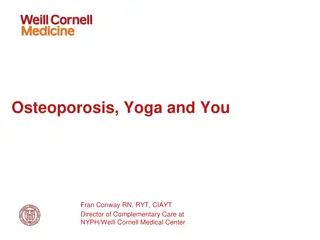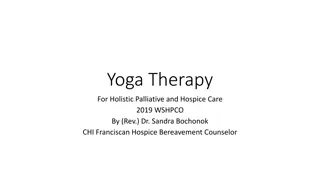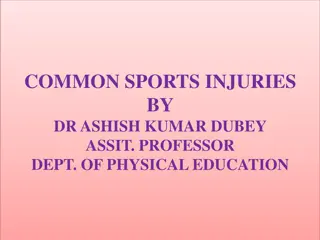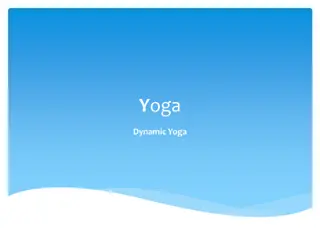Yoga for Athletes: Enhancing Performance and Preventing Injuries
Explore the benefits of yoga for athletes with a focus on balance, flexibility, muscle imbalances, injury prevention, and breath practices. Learn how yoga can improve physical fitness components and address muscle imbalances to enhance athletic performance and overall well-being. Discover specific yoga sequences and breath practices tailored for athletes to optimize training and recovery, promoting both physical and mental well-being.
Download Presentation

Please find below an Image/Link to download the presentation.
The content on the website is provided AS IS for your information and personal use only. It may not be sold, licensed, or shared on other websites without obtaining consent from the author. Download presentation by click this link. If you encounter any issues during the download, it is possible that the publisher has removed the file from their server.
E N D
Presentation Transcript
Yoga for Athletes Renee Harrington M.S. Exercise Science, E-RYT 500, Senior Master Trainer
Yoga Provides Balance for the Athlete 5 Components of Fitness Physical fitness is defined as "a set of attributes that people have or achieve that relates to the ability to perform physical activity Each aspect of physical fitness is important to health You are only as strong as your weakest link
How would you draw your pie chart? Cardiorespiratory Fitness Body Composition Flexibility Muscular Strength Muscular Endurance Training effect is evident after 6 weeks of training; deconditioning effect within 2 weeks of inactivity.
Yoga for Flexibility and Mobility Yoga brings us into and through all planes of motion
Multi-Directional Flow Sequence Down Dog Twisting Lunge Side Angle Pyramid 3-Legged Dog Down Dog
Muscle Imbalances in Athletes Upper Crossed Syndrome: Over-/underactive muscles in neck, chest, shoulders; Lower Crossed Syndrome: Over-/underactive muscles in low back, abs, glutes, hip flexors
Yoga Sequence for Muscle Imbalances Chest expansion Low lunge Cat/cow Triangle Prayer twist lunge Child s pose Locust Bridge
Breath Practices for Athletes The quality of breath will determine quality of performance Improves aerobic capacity Trains parasympathetic nervous system Some are energizing, others are calming Can use breath with visualization/meditation
Breath Practices for Athletes Diaphragmatic Breath Alternate Nostril Breath Breath of Joy
Exercise and Stress Stress HPA Axis can impact Hypothalamus-Pituitary-Adrenal Axis Neuroendocrine feedback loop Release of hormones Activated during stress
Cortisol Levels Ideally cortisol is high in the morning and tapers off through the day and evening Normally lowest around 3:00 am, begins to rise in early hours, and peaks around 8:00 am When chronically stressed, the body releases cortisol at all hours which can lead to adrenal exhaustion Other contributors: sustained periods of inadequate sleep general lack of physical and mental rest too much caffeine lack of proper diet
High Cortisol Throughout the Day High Early-Morning Cortisol High Evening Cortisol Low Cortisol Throughout the Day
Healthy Cortisol Levels Eat a Healthy Diet Supplement Nutrition (if needed) Stay Hydrated Practice Relaxing Time Your Workouts Get Some Sleep Cortisol and melatonin (hormone that regulates sleep cycles) work in tandem. When cortisol drops, melatonin takes over and makes you sleepy. When you re asleep, relatively low levels of cortisol allow your cells to repair and heal. If cortisol levels stay elevated, your body can t make those repairs and you wake up feeling fatigued.
Example Meditations for Athletes 10 minute breath meditation https://drive.google.com/file/d/1YzTXKSRnwSSu- FnDdCX55rHGdgS_bRaS/view?usp=sharing 15 minute body scan https://drive.google.com/file/d/1sDqeUT1X62u0Hz6oyDxjqHFOKyhY_ RM3/view?usp=sharing 25 minute Yoga Nidra https://drive.google.com/file/d/0B1eHjCfNO8qPS3JfM3Atb2pkbVE/vi ew Sun salutations as a moving meditation https://drive.google.com/file/d/1CulBBmU25sA6ujyi3cjxyVUXTbLuQp 0_/view
Muscle Proprioceptors Muscle Spindles Within belly of muscle, detects changes in length Excitatory impulse sent back Muscle fibers contracts to protect muscle from tearing or overstretching Golgi Tendon Organs Muscle-tendon junction, detects change in pressure Inhibitory impulse sent back Muscle relaxes in response which creates slack in the muscle
Proprioceptive Neuromuscular Facilitation Temporary contraction of the target muscle in order to stimulate the GTO. GTO signals the muscle to relax Steps: 1. Set length point where brain recognizes end of stretch 2. Gently contract 20% for 2-3 breaths (5-10 sec) 3. Relax for one deep breath 4. Go deeper contract opposite muscle to take up slack 5. Complete 2-3 cycles Advanced stretching techniques - https://drive.google.com/file/d/1FT9wOVmF7pP0RkliOHGQx8CXCUfIvw69/view?usp=sharing
Proprioceptive Neuromuscular Facilitation Slightly bend the knees and squeeze the trunk against the thighs. Then gently press the heels into the mat as if you are trying to flex the knees further. This engages the hamstrings. Bend forward to stretch the back muscles. Hold the stretch by bending the arms, then attempt to arch the back activating the erector spinae and quadratus lumborum.


